
|
Now it is 8.9 mag (Dec. 11, Chris Wyatt). It will fade out rapidly after this. It stays observable in good condition.
Date(TT) R.A. (2000) Decl. Delta r Elong. m1 Best Time(A, h)
Dec. 9 10 14.31 17 4.3 0.578 1.279 106 7.7 5:05 ( 0, 72)
Dec. 16 10 40.21 15 49.2 0.556 1.269 107 7.4 5:04 ( 0, 71)
|

|
It returns for the first time in 70 years. It will brighten up to 4.5 mag in 2024 spring. It suddenly brightened in major outburst by 5 mag up to 11.5 mag on July 20 (E. Tamas, Francois Kugel). It brightened again in another major outburst up to 9.4 mag on Nov. 15 (Nick James). Now it is 8.8 mag (Dec. 8, Osamu Miyazaki). Brightening rapidly. It locates somewhat low in the Northern Hemisphere. In the Southern Hemisphere, it is not observable now.
Date(TT) R.A. (2000) Decl. Delta r Elong. m1 Best Time(A, h)
Dec. 9 18 41.60 38 11.9 2.519 2.291 65 8.5 18:18 (116, 34)
Dec. 16 18 56.65 37 55.5 2.442 2.203 64 8.3 18:20 (117, 31)
|
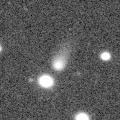
|
It is expected to brighten up to 8.5 mag in early 2024. Now it is 11.6 mag (Dec. 11, Chris Wyatt). Brightening slowly. It locates somewhat low in the Northern Hemisphere. But it will become high in spring. The brightness evolution slowed down since May.
Date(TT) R.A. (2000) Decl. Delta r Elong. m1 Best Time(A, h)
Dec. 9 13 28.03 -40 0.4 2.145 1.652 47 10.2 5:25 (328, 5)
Dec. 16 13 52.76 -39 43.9 2.064 1.594 48 10.0 5:30 (329, 6)
|
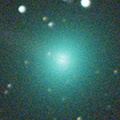
|
It approached to Earth down to 0.2 a.u. in early November, and brightened up to 6.2 mag (Nov. 11, Marco Goiato). Now it is 8.9 mag (Dec. 9, Marco Goiato). Fading rapidly. In the Northern Hemisphere, it will be unobservable in January. In the Southern Hemisphere, it will be getting lower gradually.
Date(TT) R.A. (2000) Decl. Delta r Elong. m1 Best Time(A, h)
Dec. 9 22 35.34 -39 58.9 0.996 1.150 70 10.8 18:18 ( 10, 14)
Dec. 16 22 47.46 -41 10.1 1.214 1.228 66 11.5 18:20 ( 13, 12)
|

|
It approached to Earth down to 0.38 a.u., and brightened up to 8.0 mag in autumn (Sept. 29, Virgilio Gonano). Now it is 11.2 mag (Dec. 11, Chris Wyatt). Fading rapidly. It stays observable in good condition.
Date(TT) R.A. (2000) Decl. Delta r Elong. m1 Best Time(A, h)
Dec. 9 9 5.11 -11 28.2 0.588 1.316 111 11.2 3:57 ( 0, 43)
Dec. 16 9 2.52 -13 3.0 0.608 1.371 116 11.7 3:27 ( 0, 42)
|

|
Now it is 11.8 mag (Dec. 5, Chris Wyatt). Fading slowly. In the Northern Hemisphere, it will be unobservable in January. In the Southern Hemisphere, it will be getting lower gradually. But it will be getting higher again after March.
Date(TT) R.A. (2000) Decl. Delta r Elong. m1 Best Time(A, h)
Dec. 9 23 20.70 -42 33.5 3.310 3.258 78 11.7 18:18 ( 2, 13)
Dec. 16 23 18.10 -42 12.1 3.476 3.311 72 11.9 18:20 ( 8, 12)
|

|
It brightened up to 8 mag from 2022 summer to 2023 spring. Now it is 12.1 mag (Dec. 11, Chris Wyatt). Fading slowly. It stays observable in good condition.
Date(TT) R.A. (2000) Decl. Delta r Elong. m1 Best Time(A, h)
Dec. 9 6 2.25 -5 50.0 3.545 4.409 147 12.4 0:55 ( 0, 49)
Dec. 16 5 54.40 -5 3.9 3.584 4.471 151 12.5 0:19 ( 0, 50)
|
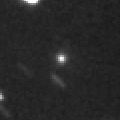
|
It is expected to brighten up to 8.5 mag from January to February. Now it is 14.4 mag (Dec. 10, Ken-ichi Kadota). Brightening rapidly. It stays observable in good condition. It is fainter than this ephemeris recently.
Date(TT) R.A. (2000) Decl. Delta r Elong. m1 Best Time(A, h)
Dec. 9 2 48.14 15 51.7 0.572 1.502 148 12.8 21:37 ( 0, 71)
Dec. 16 2 50.42 15 10.0 0.572 1.475 141 12.5 21:12 ( 0, 70)
|
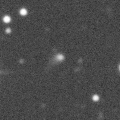
|
It will brighten up to 12 mag from 2024 to 2025. Now it is 13.7 mag (Dec. 11, Chris Wyatt). It stays 13 mag for a while. It stays observable in good condition.
Date(TT) R.A. (2000) Decl. Delta r Elong. m1 Best Time(A, h)
Dec. 9 9 31.87 8 52.6 3.933 4.423 113 13.2 4:24 ( 0, 64)
Dec. 16 9 26.55 9 55.7 3.782 4.390 122 13.1 3:51 ( 0, 65)
|

|
Now it is 13.8 mag (Dec. 11, Chris Wyatt). It stays 14 mag for a while. It stays extremely low in the Northern Hemisphere. In the Southern Hemisphere, it stays observable in good condition.
Date(TT) R.A. (2000) Decl. Delta r Elong. m1 Best Time(A, h)
Dec. 9 10 31.42 -36 53.2 4.297 4.273 82 13.2 5:23 ( 0, 18)
Dec. 16 10 25.04 -38 33.2 4.232 4.305 87 13.2 4:49 ( 0, 16)
|

|
It brightened up to 7.8 mag in late July (July 20, Thomas Lehmann). Now it is 12.9 mag (Oct. 3, Chris Wyatt). Fading slowly. In the Northern Hemisphere, it will be getting higher gradually. In the Southern Hemisphere, it is not observable now, but it will be observable soon.
Date(TT) R.A. (2000) Decl. Delta r Elong. m1 Best Time(A, h)
Dec. 9 15 14.44 -8 6.1 3.108 2.300 29 13.6 5:25 (288, 11)
Dec. 16 15 15.69 -7 25.1 3.089 2.368 36 13.7 5:30 (293, 18)
|

|
Now it is 13.0 mag (Dec. 11, Chris Wyatt). It stays observable in good condition.
Date(TT) R.A. (2000) Decl. Delta r Elong. m1 Best Time(A, h)
Dec. 9 8 42.31 20 30.4 5.496 6.160 128 13.6 3:34 ( 0, 75)
Dec. 16 8 40.68 20 33.5 5.414 6.162 136 13.6 3:05 ( 0, 75)
|

|
It brightened up to 8.3 mag in 2021-2022 winter (Jan. 6, 2022, Toshiyuki Takahashi). Now it is 13.2 mag (July 14, Chris Wyatt). It stays 14 mag for a while. It stays extremely low in the Northern Hemisphere. In the Southern Hemisphere, it stays observable in good condition.
Date(TT) R.A. (2000) Decl. Delta r Elong. m1 Best Time(A, h)
Dec. 9 11 25.99 -46 30.0 7.164 6.880 69 14.1 5:25 (351, 8)
Dec. 16 11 27.50 -47 28.4 7.137 6.926 73 14.1 5:30 (356, 7)
|

|
Now it is 14.9 mag (Sept. 18, Ken-ichi Kadota). Brightening slowly. It locates somewhat low in the Northern Hemisphere. In the Southern Hemisphere, it is not observable now, but it will be observable soon. It is expected to brighten up to 12.5 mag in 2024 spring. At the high light, it will be observable in excellent condition in the Southern Hemisphere, but it will be low in the Northern Hemisphere.
Date(TT) R.A. (2000) Decl. Delta r Elong. m1 Best Time(A, h)
Dec. 9 15 26.44 -13 30.7 3.737 2.867 24 14.3 5:25 (291, 6)
Dec. 16 15 28.40 -14 46.0 3.650 2.843 30 14.2 5:30 (296, 10)
|
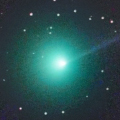
|
It brightened up to 8.1 mag in autumn (Oct. 10, Juan Jose Gonzalez). Fading rapidly. It will be fainter than 18 mag in January. It will never be observable after this.
Date(TT) R.A. (2000) Decl. Delta r Elong. m1 Best Time(A, h)
Dec. 9 17 57.97 -28 17.2 2.013 1.084 14 14.4 18:18 ( 62,-10)
Dec. 16 18 25.87 -28 3.5 2.130 1.193 13 15.1 18:20 ( 63,-10)
|
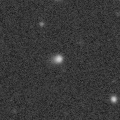
|
It will approach to Sun down to 0.4 a.u. in late September in 2024, and it is expected to brighten up to 0 mag. Now it is 14.7 mag (Dec. 1, Ken-ichi Kadota). It will brighten rapidly after this. In the Northern Hemisphere, it will be getting higher gradually. In the Southern Hemisphere, it is not observable now, but it will be observable soon. At the high light, in the Northern Hemisphere, it will be observable in good condition after the perihelion passage. In the Southern Hemisphere, it will be observable in the low sky before and after the perihelion passage.
Date(TT) R.A. (2000) Decl. Delta r Elong. m1 Best Time(A, h)
Dec. 9 14 49.81 -6 20.4 5.270 4.504 35 14.6 5:25 (291, 17)
Dec. 16 14 53.50 -6 40.6 5.117 4.427 41 14.5 5:30 (296, 22)
|

|
Now it is 14.8 mag (Dec. 11, Chris Wyatt). Fading slowly. In the Northern Hemisphere, it is not observable now. In the Southern Hemisphere, it stays observable in good condition. It was expected to brighten up to 10 mag from spring to summer. However, it was fainter than originally expected.
Date(TT) R.A. (2000) Decl. Delta r Elong. m1 Best Time(A, h)
Dec. 9 9 18.63 -86 38.2 3.943 3.701 68 14.6 4:08 ( 0,-32)
Dec. 16 7 2.81 -86 43.5 3.963 3.738 69 14.6 1:24 ( 0,-32)
|

|
Now it is 14.7 mag (Dec. 11, Chris Wyatt). It stays 14 mag for a while. It stays extremely low in the Northern Hemisphere. In the Southern Hemisphere, it stays observable in good condition.
Date(TT) R.A. (2000) Decl. Delta r Elong. m1 Best Time(A, h)
Dec. 9 11 55.09 -35 14.6 5.728 5.409 66 14.6 5:25 (343, 17)
Dec. 16 11 59.46 -35 50.7 5.625 5.389 71 14.6 5:30 (349, 18)
|

|
Now it is 13.5 mag (Dec. 5, Chris Wyatt). It stays 15 mag for a while. In the Northern Hemisphere, it stays observable in good condition. In the Southern Hemisphere, it will be getting lower gradually.
Date(TT) R.A. (2000) Decl. Delta r Elong. m1 Best Time(A, h)
Dec. 9 2 48.81 17 7.9 1.440 2.338 148 14.7 21:37 ( 0, 72)
Dec. 16 2 45.12 17 28.7 1.461 2.309 140 14.7 21:06 ( 0, 73)
|

|
Now it is 15.6 mag (Dec. 4, Hiroshi Abe). Fading slowly. It will be unobservable in January in the Southern Hemisphere, or in February in the Northern Hemisphere. But it will be observable again in March in the Northern Hemisphere, or in April in the Southern Hemisphere.
Date(TT) R.A. (2000) Decl. Delta r Elong. m1 Best Time(A, h)
Dec. 9 22 35.57 3 3.8 3.670 3.724 85 15.0 18:18 ( 24, 56)
Dec. 16 22 32.91 3 11.5 3.837 3.756 77 15.2 18:20 ( 37, 53)
|
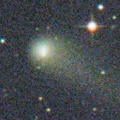
|
It brightened up to 11.1 mag in early 2022 (Mar. 31, 2022, F. Kugel, J.-G. Bosch, J. Nicolas). Now it is 14.3 mag (Nov. 3, Hiroshi Abe). It stays 15 mag for a while. In the Northern Hemisphere, it will be getting higher gradually. In the Southern Hemisphere, it is not observable now, but it will appear in February.
Date(TT) R.A. (2000) Decl. Delta r Elong. m1 Best Time(A, h)
Dec. 9 16 42.29 15 54.3 6.845 6.110 38 15.1 5:25 (256, 7)
Dec. 16 16 48.27 16 6.8 6.860 6.148 40 15.2 5:30 (259, 13)
|

|
Now it is 15.2 mag (Dec. 3, Ken-ichi Kadota). Fading gradually. In the Northern Hemisphere, it stays observable in good condition. In the Southern Hemisphere, it will be getting lower gradually after this, and it will be unobservable in March.
Date(TT) R.A. (2000) Decl. Delta r Elong. m1 Best Time(A, h)
Dec. 9 0 37.12 -24 58.1 1.319 1.782 100 15.3 19:26 ( 0, 30)
Dec. 16 0 39.14 -20 0.1 1.369 1.777 96 15.3 19:01 ( 0, 35)
|
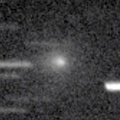
|
It brightened up to 12.6 mag in autumn (Oct. 3, Chris Wyatt). Now it is 15.2 mag (Nov. 21, Ken-ichi Kadota). Fading rapidly. It will be fainter than 18 mag in January. In the Northern Hemisphere, it stays observable in good condition. It stays extremely low in the Southern Hemisphere.
Date(TT) R.A. (2000) Decl. Delta r Elong. m1 Best Time(A, h)
Dec. 9 21 29.92 0 12.1 1.382 1.385 69 15.3 18:18 ( 45, 46)
Dec. 16 21 59.88 1 20.6 1.468 1.456 69 15.7 18:20 ( 46, 47)
|

|
It will turn to fade out rapidly after brightening. It will be fainter than 18 mag in February. It stays extremely low. It will brighten up to 13 mag in January. But it locates extremely low.
Date(TT) R.A. (2000) Decl. Delta r Elong. m1 Best Time(A, h)
Dec. 9 14 44.51 -19 45.1 1.814 1.105 31 16.6 5:25 (302, 9)
Dec. 16 15 16.16 -20 6.4 1.802 1.091 31 15.4 5:30 (303, 9)
|
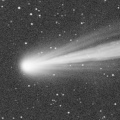
|
It approached to Sun down to 0.23 a.u. and brightened up to 2.5 mag in mid September (Sept. 18, Juan Jose Gonzalez). Now it is 12.8 mag (Dec. 11, Chris Wyatt). Fading rapidly. It will be fainter than 18 mag in January. In the Northern Hemisphere, it will be unobservable in January. In the Southern Hemisphere, it stays observable in good condition. It is brighter than this ephemeris recently.
Date(TT) R.A. (2000) Decl. Delta r Elong. m1 Best Time(A, h)
Dec. 9 12 41.41 -45 20.4 2.229 1.875 56 15.4 5:25 (338, 5)
Dec. 16 12 34.15 -47 43.5 2.239 1.989 62 15.8 5:30 (345, 5)
|
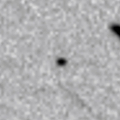
|
It will approach to Earth down to 0.2 a.u. from February to March, and it is expected to brighten up to 13 mag. Now it is 17 mag (Nov. 26, WISE). Brightening gradually. It stays observable in good condition.
Date(TT) R.A. (2000) Decl. Delta r Elong. m1 Best Time(A, h)
Dec. 9 23 56.44 -11 16.4 0.617 1.235 98 15.9 18:46 ( 0, 44)
Dec. 16 0 2.76 -12 18.0 0.601 1.173 92 15.6 18:25 ( 0, 43)
|
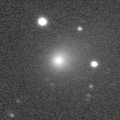
|
The ATLAS search program detected its cometary activity in April. It continues to be brightening even after the perihelion passage. Now it is 15.0 mag (Dec. 5, Chris Wyatt). It will fade out rapidly after this. It will be fainter than 18 mag in February. In the Southern Hemisphere, it will be getting lower gradually.
Date(TT) R.A. (2000) Decl. Delta r Elong. m1 Best Time(A, h)
Dec. 9 23 44.20 -17 30.6 3.292 3.484 92 15.6 18:34 ( 0, 38)
Dec. 16 23 48.75 -16 18.6 3.430 3.526 87 15.8 18:20 ( 3, 39)
|

|
David Rankin detected its cometary activity in June. Now it is 16.2 mag (Dec. 3, R. Fichtl). Fading gradually. It will be fainter than 18 mag in April. In the Northern Hemisphere, it stays observable in good condition. In the Southern Hemisphere, it will be getting lower gradually after this, and it will be unobservable in March.
Date(TT) R.A. (2000) Decl. Delta r Elong. m1 Best Time(A, h)
Dec. 9 23 0.12 -0 32.7 1.889 2.126 89 15.7 18:18 ( 12, 54)
Dec. 16 23 11.22 0 23.8 1.960 2.124 85 15.8 18:20 ( 20, 54)
|
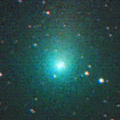
|
It brightened up to 9.5 mag from last winter to early spring (Jan. 30, Katsumi Yoshimoto). Now it is 16.0 mag (Dec. 8, Toshihiko Ikemura, Hirohisa Sato). Fading gradually. It will be fainter than 18 mag in March. It will be getting lower gradually after this, and it will be unobservable in February.
Date(TT) R.A. (2000) Decl. Delta r Elong. m1 Best Time(A, h)
Dec. 9 22 36.08 -13 7.2 3.926 3.869 79 15.8 18:18 ( 17, 40)
Dec. 16 22 38.57 -13 34.7 4.111 3.933 72 16.0 18:20 ( 25, 38)
|

|
It has not been observed yet in this apparition. It was expected to brighten rapidly up to 15 mag in summer. But actually, it is not detected, fainter than 18 mag (Oct. 14, Martin Masek). Fading slowly. It will be unobservable in January in the Southern Hemisphere, or in February in the Northern Hemisphere.
Date(TT) R.A. (2000) Decl. Delta r Elong. m1 Best Time(A, h)
Dec. 9 20 31.20 -16 22.2 2.480 1.992 49 16.0 18:18 ( 47, 24)
Dec. 16 20 47.03 -15 1.0 2.540 1.998 46 16.0 18:20 ( 51, 23)
|
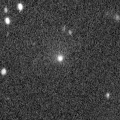
|
Very large comet. It is expected to brighten up to 13 mag in 2031. Now it is 15.9 mag (Nov. 22, Thomas Lehmann). It stays 16 mag for a while. In the Northern Hemisphere, it is not observable now. In the Southern Hemisphere, it stays observable in good condition. In the Northern Hemisphere, it is not observable until 2030.
Date(TT) R.A. (2000) Decl. Delta r Elong. m1 Best Time(A, h)
Dec. 9 3 2.39 -65 58.5 16.928 16.930 88 16.0 21:50 ( 0,-11)
Dec. 16 2 59.77 -65 51.5 16.940 16.906 86 16.0 21:20 ( 0,-11)
|

|
New peridic comet which brightened up to 16 mag in 2007. It has not been recovered yet. It was missed in 2013 and 2018. It will approach to Earth down to 0.34 a.u. in winter, and it is expected to brighten up to 16 mag. It will fade out rapidly after this. It will be fainter than 18 mag in January. In the Northern Hemisphere, it stays observable in good condition. It stays extremely low in the Southern Hemisphere.
Date(TT) R.A. (2000) Decl. Delta r Elong. m1 Best Time(A, h)
Dec. 9 20 12.59 -7 34.5 0.457 0.763 48 16.2 18:18 ( 57, 28)
Dec. 16 20 58.07 1 59.7 0.386 0.834 56 16.0 18:20 ( 62, 38)
|

|
Now it is 14.3 mag (July 7, Thomas Lehmann). It stays 16 mag for a while. In the Northern Hemisphere, it is not observable now, but it will appear in January. In the Southern Hemisphere, it will be getting higher gradually.
Date(TT) R.A. (2000) Decl. Delta r Elong. m1 Best Time(A, h)
Dec. 9 15 18.53 -48 42.9 4.043 3.260 32 16.1 5:25 (320,-15)
Dec. 16 15 29.92 -48 37.2 4.077 3.318 34 16.2 5:30 (322,-12)
|

|
Now it is 16.1 mag (Nov. 29, Ken-ichi Kadota). It stays 16 mag for a while. In the Northern Hemisphere, it will be unobservable in March. In the Southern Hemisphere, it stays observable in good condition. The brightness evolution is slower than originally expected.
Date(TT) R.A. (2000) Decl. Delta r Elong. m1 Best Time(A, h)
Dec. 9 2 3.95 -27 40.7 3.044 3.560 113 16.1 20:52 ( 0, 27)
Dec. 16 1 57.18 -28 35.3 3.104 3.518 106 16.1 20:18 ( 0, 26)
|
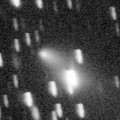
|
It brightened up to 13.6 mag in summer (July 16, Mitsunori Tsumura). Now it is 15.7 mag (Nov. 21, Ken-ichi Kadota). It will fade out rapidly after this. It will be fainter than 18 mag in February. In the Northern Hemisphere, it stays observable in good condition. In the Southern Hemisphere, it will never be observable after this.
Date(TT) R.A. (2000) Decl. Delta r Elong. m1 Best Time(A, h)
Dec. 9 23 17.42 66 8.4 1.811 2.369 112 16.1 18:18 (178, 59)
Dec. 16 23 23.32 65 19.7 1.892 2.415 110 16.3 18:20 (173, 59)
|
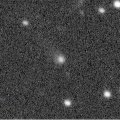
|
Now it is 17.4 mag (Dec. 2, Jean-Claude Merlin). It stays 16 mag for a while. In the Northern Hemisphere, it will never be observable after this. In the Southern Hemisphere, it stays observable in good condition.
Date(TT) R.A. (2000) Decl. Delta r Elong. m1 Best Time(A, h)
Dec. 9 9 24.03 -61 8.2 3.783 3.757 80 16.1 4:15 ( 0, -6)
Dec. 16 9 12.77 -63 51.1 3.762 3.768 82 16.1 3:37 ( 0, -9)
|
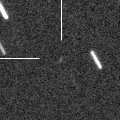
|
Now it is 17.9 mag (Dec. 7, Toshihiko Ikemura, Hirohisa Sato). Fading slowly. In the Northern Hemisphere, it will be getting lower gradually. In the Southern Hemisphere, it stays observable in good condition. It is fainter than this ephemeris recently.
Date(TT) R.A. (2000) Decl. Delta r Elong. m1 Best Time(A, h)
Dec. 9 11 47.75 -5 2.8 2.095 2.108 77 16.3 5:25 (333, 46)
Dec. 16 11 42.05 -8 24.3 1.985 2.126 84 16.3 5:30 (347, 46)
|
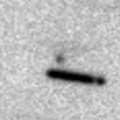
|
It returned for the first time in 68 years. It will brighten up to 7.5 mag in 2024 summer. Now it is 16.8 mag (Dec. 8, Toshihiko Ikemura, Hirohisa Sato). It will brighten rapidly after this. It stays observable in good condition. At the high light, it locates low in the Northern Hemisphere, or it is not observable in the Southern Hemisphere.
Date(TT) R.A. (2000) Decl. Delta r Elong. m1 Best Time(A, h)
Dec. 9 3 27.57 -19 52.2 2.211 2.959 131 16.6 22:15 ( 0, 35)
Dec. 16 3 19.17 -18 46.9 2.186 2.887 127 16.3 21:40 ( 0, 36)
|
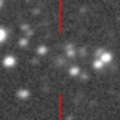
|
Now it is 17.3 mag (Nov. 14, ATLAS Chile). Fading slowly. It will be unobservable in January. But it will be observable again in March in the Southern Hemisphere.
Date(TT) R.A. (2000) Decl. Delta r Elong. m1 Best Time(A, h)
Dec. 9 20 11.41 -33 31.0 3.684 3.040 43 16.4 18:18 ( 40, 8)
Dec. 16 20 24.06 -33 6.7 3.756 3.054 39 16.5 18:20 ( 43, 6)
|

|
Now it is 15.8 mag (Dec. 7, Toshihiko Ikemura, Hirohisa Sato). It stays 17 mag for a while. It stays observable in good condition.
Date(TT) R.A. (2000) Decl. Delta r Elong. m1 Best Time(A, h)
Dec. 9 4 42.76 -12 39.0 6.332 7.155 144 16.6 23:31 ( 0, 42)
Dec. 16 4 40.08 -12 26.9 6.322 7.125 142 16.5 23:01 ( 0, 43)
|
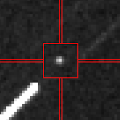
|
Now it is 14.6 mag (Dec. 5, Chris Wyatt). Fading slowly. It will be unobservable in January. But it will be observable again in February. It is brighter than this ephemeris recently.
Date(TT) R.A. (2000) Decl. Delta r Elong. m1 Best Time(A, h)
Dec. 9 22 13.66 -39 4.8 1.039 1.119 67 16.6 18:18 ( 15, 14)
Dec. 16 21 49.03 -38 56.5 1.194 1.042 56 16.6 18:20 ( 25, 10)
|

|
It approached to Earth down to 0.29 a.u. in early February, and it brightened up to 4.5 mag (Feb. 1, Juan Jose Gonzalez). Now it is 17.2 mag (Dec. 4, ATLAS South Africa). Fading slowly. It will be fainter than 18 mag in March. In the Northern Hemisphere, it will never be observable after this. In the Southern Hemisphere, it stays observable in good condition.
Date(TT) R.A. (2000) Decl. Delta r Elong. m1 Best Time(A, h)
Dec. 9 4 22.09 -62 54.6 4.231 4.411 94 16.6 23:08 ( 0, -8)
Dec. 16 4 5.04 -62 36.8 4.330 4.481 92 16.7 22:24 ( 0, -8)
|
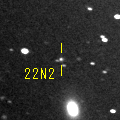
|
It is expected to brighten up to 11.5 mag in 2025 autumn, and it will be observable in good condition. Now it is 17.0 mag (Dec. 8, Toshihiko Ikemura, Hirohisa Sato). It stays 16 mag for a while. It will be unobservable in January. But it will be observable again in March in the Southern Hemisphere, or in April in the Northern Hemisphere.
Date(TT) R.A. (2000) Decl. Delta r Elong. m1 Best Time(A, h)
Dec. 9 20 51.19 -17 50.9 6.832 6.303 53 16.7 18:18 ( 42, 25)
Dec. 16 20 55.36 -17 31.2 6.878 6.261 47 16.6 18:20 ( 47, 22)
|
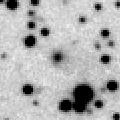
|
Now it is 16.8 mag (Dec. 8, Ken-ichi Kadota). It stays 17 mag for a while. In the Northern Hemisphere, it stays observable in good condition. It stays extremely low in the Southern Hemisphere.
Date(TT) R.A. (2000) Decl. Delta r Elong. m1 Best Time(A, h)
Dec. 9 4 45.73 41 46.9 5.754 6.691 160 16.6 23:34 (180, 83)
Dec. 16 4 42.70 41 44.2 5.763 6.690 158 16.6 23:04 (180, 83)
|
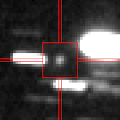
|
It is expected to brighten up to 12.5 mag in 2024 summer. Now it is 17.3 mag (July 28, ATLAS South Africa). Brightening gradually. In the Northern Hemisphere, it is not observable now. In the Southern Hemisphere, it stays observable in good condition. Around the high light, it is observable in good condition in the Southern Hemisphere, but it locates very low in the Northern Hemisphere.
Date(TT) R.A. (2000) Decl. Delta r Elong. m1 Best Time(A, h)
Dec. 9 13 36.97 -54 58.5 4.871 4.296 49 16.8 5:25 (335, -8)
Dec. 16 13 48.46 -56 11.5 4.776 4.241 51 16.7 5:30 (339, -8)
|

|
Fading gradually. It will be fainter than 18 mag in January. In the Northern Hemisphere, it stays observable in good condition. It stays extremely low in the Southern Hemisphere.
Date(TT) R.A. (2000) Decl. Delta r Elong. m1 Best Time(A, h)
Dec. 9 21 13.26 7 20.2 1.075 1.165 68 16.7 18:18 ( 56, 49)
Dec. 16 21 44.39 8 51.4 1.206 1.264 69 17.0 18:20 ( 57, 50)
|

|
Now it is 17.2 mag (Dec. 8, Ken-ichi Kadota). It stays 17 mag for a while. In the Northern Hemisphere, it stays observable in good condition. It locates somewhat low in the Southern Hemisphere. But it will become high in autumn.
Date(TT) R.A. (2000) Decl. Delta r Elong. m1 Best Time(A, h)
Dec. 9 4 50.68 36 9.4 4.192 5.155 166 16.8 23:39 (180, 89)
Dec. 16 4 46.98 35 30.6 4.181 5.136 164 16.8 23:08 (180, 90)
|
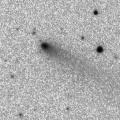
|
Now it is 15.4 mag (Nov. 19, Toshihiko Ikemura, Hirohisa Sato). Fading slowly. It will be fainter than 18 mag in March. In the Northern Hemisphere, it stays observable in good condition. In the Southern Hemisphere, it will be getting lower gradually after this, and it will be unobservable in March.
Date(TT) R.A. (2000) Decl. Delta r Elong. m1 Best Time(A, h)
Dec. 9 0 5.72 -6 50.1 3.504 3.835 102 16.8 18:55 ( 0, 48)
Dec. 16 0 7.87 -6 16.3 3.624 3.850 95 16.9 18:30 ( 0, 49)
|
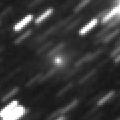
|
Very far object. Now it is 16.9 mag (Dec. 4, ATLAS South Africa). It stays 17 mag for a while. In the Northern Hemisphere, it is not observable now. In the Southern Hemisphere, it stays observable in good condition.
Date(TT) R.A. (2000) Decl. Delta r Elong. m1 Best Time(A, h)
Dec. 9 3 14.47 -76 44.9 10.452 10.314 79 16.8 22:00 ( 0,-22)
Dec. 16 3 0.63 -76 15.3 10.477 10.314 77 16.8 21:19 ( 0,-21)
|
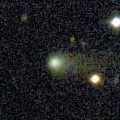
|
It brightened up to 13.9 mag in early 2023 (Jan. 21, Hidenori Nohara). Now it is 18.7 mag (Dec. 8, Toshihiko Ikemura, Hirohisa Sato). It stays 17 mag for a while. In the Northern Hemisphere, it stays observable in good condition. In the Southern Hemisphere, it is not observable now, but it will be observable soon.
Date(TT) R.A. (2000) Decl. Delta r Elong. m1 Best Time(A, h)
Dec. 9 14 0.70 6 46.8 4.883 4.361 52 16.9 5:25 (288, 35)
Dec. 16 14 7.27 6 34.5 4.841 4.400 58 16.9 5:30 (294, 40)
|

|
It brightened up to 14.1 mag in 2022 spring (Mar. 22, 2022, Chris Wyatt). Now it is 16.6 mag (Nov. 29, Ken-ichi Kadota). Fading slowly. It will be fainter than 18 mag in April. It will be getting lower gradually after this, and it will be unobservable in March.
Date(TT) R.A. (2000) Decl. Delta r Elong. m1 Best Time(A, h)
Dec. 9 1 27.77 -0 50.8 5.190 5.788 123 16.9 20:16 ( 0, 54)
Dec. 16 1 24.16 -0 24.7 5.344 5.836 115 17.0 19:45 ( 0, 55)
|

|
It brightened up to 11.8 mag in summer (June 17, Osamu Miyazaki). Now it is 16.5 mag (Nov. 14, Toshihiko Ikemura, Hirohisa Sato). It will fade out rapidly after this. It will be fainter than 18 mag in January. In the Northern Hemisphere, it will be getting lower gradually. In the Southern Hemisphere, it will be unobservable in January.
Date(TT) R.A. (2000) Decl. Delta r Elong. m1 Best Time(A, h)
Dec. 9 21 24.70 -1 46.5 2.751 2.539 67 16.9 18:18 ( 45, 43)
Dec. 16 21 35.91 -1 14.9 2.858 2.568 63 17.1 18:20 ( 50, 41)
|
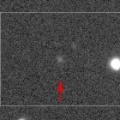
|
It will be observable at 15-16 mag from 2024 to 2025. Now it is 17.6 mag (Dec. 8, Toshihiko Ikemura, Hirohisa Sato). Brightening slowly. In the Northern Hemisphere, it stays observable in good condition. In the Southern Hemisphere, it will be getting higher gradually.
Date(TT) R.A. (2000) Decl. Delta r Elong. m1 Best Time(A, h)
Dec. 9 12 48.37 3 17.9 4.097 3.816 66 17.0 5:25 (308, 45)
Dec. 16 12 54.05 2 50.6 3.983 3.800 72 16.9 5:30 (316, 49)
|
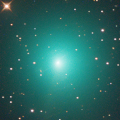
|
It brightened up to 8.4 mag in late July (July 22, Thomas Lehmann). Now it is 18.4 mag (Nov. 15, Toshihiko Ikemura, Hirohisa Sato). Fading rapidly. It will be fainter than 18 mag in January. It locates somewhat low in the Northern Hemisphere. In the Southern Hemisphere, it will be getting lower gradually. Thomas Lehmann reported it was bright as 14.9 mag on Nov. 18.
Date(TT) R.A. (2000) Decl. Delta r Elong. m1 Best Time(A, h)
Dec. 9 23 32.43 -23 25.0 2.381 2.544 87 17.1 18:22 ( 0, 32)
Dec. 16 23 40.54 -22 42.1 2.550 2.622 83 17.4 18:20 ( 5, 32)
|
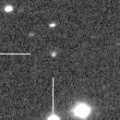
|
It stays 17 mag for a while. It locates somewhat low in the Northern Hemisphere. But it will become high in summer. In the Southern Hemisphere, it will be getting higher gradually.
Date(TT) R.A. (2000) Decl. Delta r Elong. m1 Best Time(A, h)
Dec. 9 12 57.31 -22 40.8 3.966 3.506 55 17.1 5:25 (324, 23)
Dec. 16 13 6.25 -23 32.0 3.877 3.495 60 17.1 5:30 (330, 25)
|

|
Now it is 16.9 mag (Dec. 1, ATLAS South Africa). It stays 17 mag for a while. It stays extremely low in the Northern Hemisphere. In the Southern Hemisphere, it stays observable in good condition.
Date(TT) R.A. (2000) Decl. Delta r Elong. m1 Best Time(A, h)
Dec. 9 5 1.13 -41 5.0 7.283 7.768 116 17.2 23:49 ( 0, 14)
Dec. 16 4 58.32 -40 57.9 7.272 7.744 115 17.1 23:18 ( 0, 14)
|
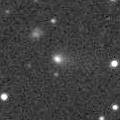
|
Now it is 16.5 mag (Dec. 8, Toshihiko Ikemura, Hirohisa Sato). Fading slowly. It will be fainter than 18 mag in January. It stays observable in good condition.
Date(TT) R.A. (2000) Decl. Delta r Elong. m1 Best Time(A, h)
Dec. 9 3 24.61 4 6.7 2.292 3.185 150 17.3 22:13 ( 0, 59)
Dec. 16 3 21.38 4 15.8 2.355 3.199 143 17.4 21:42 ( 0, 59)
|

|
Now it is 16.2 mag (Dec. 2, D. Buczynski). It stays 18 mag for a while. In the Northern Hemisphere, it will be getting lower gradually. But it will be getting higher again after March. In the Southern Hemisphere, it is not observable now.
Date(TT) R.A. (2000) Decl. Delta r Elong. m1 Best Time(A, h)
Dec. 9 22 43.89 45 52.5 3.962 4.298 103 17.3 18:18 (145, 76)
Dec. 16 22 39.33 44 15.2 4.048 4.286 97 17.4 18:20 (127, 72)
|

|
First return of a new periodic comet which brightened up to 10 mag in 2001. It is expected to brighten up to 12-13 mag from February to March in 2024. Now it is 16.4 mag (Dec. 1, Hidetaka Sato). It will brighten rapidly after this. In the Northern Hemisphere, it stays observable in good condition. In the Southern Hemisphere, it will be getting lower gradually after this, and it will be unobservable in January.
Date(TT) R.A. (2000) Decl. Delta r Elong. m1 Best Time(A, h)
Dec. 9 23 6.93 -19 5.7 1.557 1.755 84 17.4 18:18 ( 6, 36)
Dec. 16 23 7.45 -14 45.0 1.595 1.705 78 17.3 18:20 ( 16, 39)
|
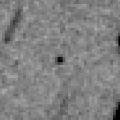
|
Now it is 18.3 mag (Dec. 5, ATLAS-HKO, Haleakala). It stays 17 mag for a while. In the Northern Hemisphere, it stays observable in good condition. It locates somewhat low in the Southern Hemisphere.
Date(TT) R.A. (2000) Decl. Delta r Elong. m1 Best Time(A, h)
Dec. 9 7 41.93 33 43.6 0.955 1.840 143 17.5 2:34 ( 0, 89)
Dec. 16 7 43.91 34 45.6 0.894 1.811 149 17.3 2:09 ( 0, 90)
|
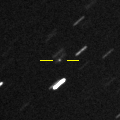
|
It brightens up to 16 mag from January to February. Now it is 17.4 mag (Dec. 8, Toshihiko Ikemura, Hirohisa Sato). Brightening slowly. It stays observable in good condition.
Date(TT) R.A. (2000) Decl. Delta r Elong. m1 Best Time(A, h)
Dec. 9 9 6.04 6 51.6 1.288 1.965 118 17.7 3:58 ( 0, 62)
Dec. 16 9 9.97 4 30.6 1.205 1.936 124 17.5 3:34 ( 0, 59)
|

|
It is expected to brighten up to 13 mag in early summer in 2024. Now it is 17.3 mag (Dec. 4, ATLAS South Africa). It will brighten rapidly after this. It locates somewhat low in the Northern Hemisphere. In the Southern Hemisphere, it will be getting lower gradually after this, and it will be unobservable in April. At the high light, it is not observable in the Southern Hemisphere, or it locates low in the Northern Hemisphere.
Date(TT) R.A. (2000) Decl. Delta r Elong. m1 Best Time(A, h)
Dec. 9 2 45.91 -44 50.5 2.298 2.736 105 17.7 21:33 ( 0, 10)
Dec. 16 2 33.82 -42 40.9 2.264 2.656 102 17.5 20:54 ( 0, 13)
|
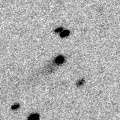
|
Now it is 17.4 mag (Dec. 3, ATLAS-HKO, Haleakala). It stays 18 mag for a while. In the Northern Hemisphere, it stays observable in good condition. In the Southern Hemisphere, it will be getting higher gradually.
Date(TT) R.A. (2000) Decl. Delta r Elong. m1 Best Time(A, h)
Dec. 9 12 33.49 13 13.9 9.514 9.300 74 17.6 5:25 (302, 55)
Dec. 16 12 33.20 13 30.9 9.406 9.313 81 17.6 5:30 (312, 61)
|

|
Now it is 17.2 mag (Dec. 8, Toshihiko Ikemura, Hirohisa Sato). Fading slowly. It will be fainter than 18 mag in January. In the Northern Hemisphere, it will be getting lower gradually. It locates somewhat low in the Southern Hemisphere. It was very faint as 21.5 mag in 2021. It seems to be bright temporarily in outburst.
Date(TT) R.A. (2000) Decl. Delta r Elong. m1 Best Time(A, h)
Dec. 9 21 30.28 -10 19.0 5.030 4.705 65 17.6 18:18 ( 37, 37)
Dec. 16 21 35.33 -9 54.6 5.142 4.720 59 17.7 18:20 ( 44, 34)
|
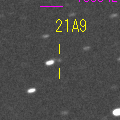
|
Now it is 18.3 mag (Nov. 21, Ken-ichi Kadota). It stays 18 mag for a while. It stays observable in good condition.
Date(TT) R.A. (2000) Decl. Delta r Elong. m1 Best Time(A, h)
Dec. 9 7 14.31 9 25.5 6.930 7.760 145 17.7 2:07 ( 0, 64)
Dec. 16 7 8.64 9 19.4 6.872 7.761 152 17.7 1:33 ( 0, 64)
|

|
It brightened up to 13.4 mag in 2022 summer (July 7, 2022, Giuseppe Pappa). Now it is 18.6 mag (Oct. 2, ATLAS-HKO, Haleakala). It stays 18 mag for a while. In the Northern Hemisphere, it will be getting higher gradually. In the Southern Hemisphere, it will never be observable after this.
Date(TT) R.A. (2000) Decl. Delta r Elong. m1 Best Time(A, h)
Dec. 9 16 5.24 31 16.6 5.640 5.148 55 17.8 5:25 (247, 23)
Dec. 16 16 9.39 31 60.0 5.641 5.197 58 17.8 5:30 (249, 28)
|

|
Now it is 18.4 mag (Dec. 7, Toshihiko Ikemura, Hirohisa Sato). It stays 18 mag for a while. It stays observable in good condition.
Date(TT) R.A. (2000) Decl. Delta r Elong. m1 Best Time(A, h)
Dec. 9 4 45.80 23 45.5 3.150 4.134 176 17.8 23:34 ( 0, 79)
Dec. 16 4 41.27 23 25.3 3.165 4.135 168 17.8 23:02 ( 0, 78)
|
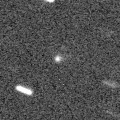
|
Now it is 17.1 mag (Dec. 3, Ken-ichi Kadota). It stays 18 mag for a while. In the Northern Hemisphere, it stays observable in good condition. In the Southern Hemisphere, it will be getting lower gradually.
Date(TT) R.A. (2000) Decl. Delta r Elong. m1 Best Time(A, h)
Dec. 9 1 22.08 -2 33.2 2.133 2.773 121 17.9 20:11 ( 0, 53)
Dec. 16 1 21.46 -2 10.2 2.181 2.735 114 17.9 19:43 ( 0, 53)
|

|
Now it is 18.1 mag (Dec. 4, ATLAS-HKO, Haleakala). Fading slowly. It will be fainter than 18 mag in January. In the Northern Hemisphere, it stays observable in good condition. In the Southern Hemisphere, it will never be observable after this.
Date(TT) R.A. (2000) Decl. Delta r Elong. m1 Best Time(A, h)
Dec. 9 20 53.19 75 14.2 1.525 2.012 104 18.0 18:18 (167, 46)
Dec. 16 21 21.25 75 45.6 1.510 2.007 105 17.9 18:20 (167, 45)
|
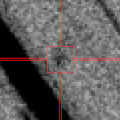
|
Tiny member of Comet C/1988 A1 ( Liller )'s group. Now it is 17.5 mag (Nov. 17, Giuseppe Pappa). It will fade out rapidly after this. In the Northern Hemisphere, it will be getting lower gradually. In the Southern Hemisphere, it is not observable now.
Date(TT) R.A. (2000) Decl. Delta r Elong. m1 Best Time(A, h)
Dec. 9 18 49.76 26 12.6 0.810 0.852 55 19.3 18:18 (103, 30)
Dec. 16 18 36.37 26 50.4 0.930 0.848 52 19.6 18:20 (108, 22)
|
|
![]()
 C/2023 P1 ( Nishimura )
C/2023 P1 ( Nishimura ) 207P/NEAT
207P/NEAT C/2022 JK5 ( PanSTARRS )
C/2022 JK5 ( PanSTARRS ) 471P/2023 KF3
471P/2023 KF3 C/2022 A2 ( PanSTARRS )
C/2022 A2 ( PanSTARRS ) 213P/Van Ness
213P/Van Ness C/2014 UN271 ( Bernardinelli-Bernstein )
C/2014 UN271 ( Bernardinelli-Bernstein ) P/2007 T2 ( Kowalski )
P/2007 T2 ( Kowalski ) C/2021 Y1 ( ATLAS )
C/2021 Y1 ( ATLAS ) C/2022 S4 ( Lemmon )
C/2022 S4 ( Lemmon ) 126P/IRAS
126P/IRAS C/2022 A3 ( Lemmon-ATLAS )
C/2022 A3 ( Lemmon-ATLAS ) C/2022 V2 ( Lemmon )
C/2022 V2 ( Lemmon ) 13P/Olbers
13P/Olbers 199P/Shoemaker 4
199P/Shoemaker 4 C/2022 QE78 ( ATLAS )
C/2022 QE78 ( ATLAS ) C/2023 S3 ( Lemmon )
C/2023 S3 ( Lemmon ) C/2022 E3 ( ZTF )
C/2022 E3 ( ZTF ) C/2022 N2 ( PanSTARRS )
C/2022 N2 ( PanSTARRS ) C/2021 S4 ( Tsuchinshan )
C/2021 S4 ( Tsuchinshan ) C/2023 C2 ( ATLAS )
C/2023 C2 ( ATLAS ) (3200) Phaethon
(3200) Phaethon C/2022 U3 ( Bok )
C/2022 U3 ( Bok ) 117P/Helin-Roman-Alu 1
117P/Helin-Roman-Alu 1 C/2019 E3 ( ATLAS )
C/2019 E3 ( ATLAS ) C/2020 S4 ( PanSTARRS )
C/2020 S4 ( PanSTARRS ) C/2020 Y2 ( ATLAS )
C/2020 Y2 ( ATLAS ) 237P/LINEAR
237P/LINEAR 65P/Gunn
65P/Gunn C/2023 E1 ( ATLAS )
C/2023 E1 ( ATLAS ) C/2022 T1 ( Lemmon )
C/2022 T1 ( Lemmon ) C/2022 R6 ( PanSTARRS )
C/2022 R6 ( PanSTARRS ) 170P/Christensen
170P/Christensen C/2022 U1 ( Leonard )
C/2022 U1 ( Leonard ) P/2001 Q6 ( NEAT )
P/2001 Q6 ( NEAT ) 227P/Catalina-LINEAR
227P/Catalina-LINEAR 150P/LONEOS
150P/LONEOS C/2023 V4 ( Camarasa-Duszanowicz )
C/2023 V4 ( Camarasa-Duszanowicz ) C/2020 F2 ( ATLAS )
C/2020 F2 ( ATLAS ) P/2023 M4 ( ATLAS )
P/2023 M4 ( ATLAS ) C/2021 A9 ( PanSTARRS )
C/2021 A9 ( PanSTARRS ) C/2020 R7 ( ATLAS )
C/2020 R7 ( ATLAS ) 404P/2020 M6 ( Bressi )
404P/2020 M6 ( Bressi ) 30P/Reinmuth 1
30P/Reinmuth 1 C/2023 T2 ( Borisov )
C/2023 T2 ( Borisov ) C/2023 V5 ( Leonard )
C/2023 V5 ( Leonard )![]()






























































